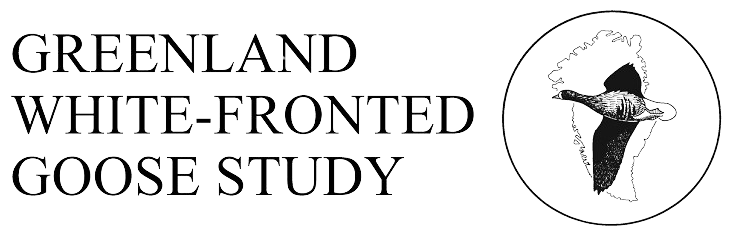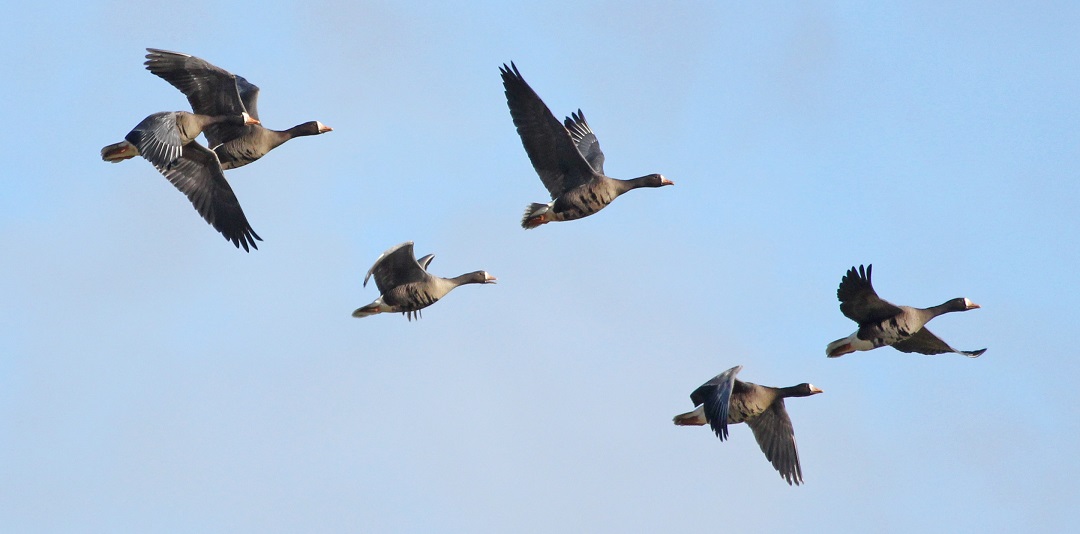History
There is no mention of this flock in Berry (1939), A-W (1963) or R&O (1979), nor is there any records of even occasional occurrences of this species in this part of Scotland from other accounts of White-fronted Geese. Intriguingly, the nearby site at Moine Mhor (Crinon Moss) formerly held up to 100 birds, but was according to R&O (1979) seemingly deserted by the late 1970s, so there was speculation at the time that perhaps these birds may have been displaced to Keills/Danna. Subsequently, it has become clear that the Moine Mhor flock has persisted at that site, so it is increasingly likely that the Keills/Danna flock has been in existence throughout, merely not recorded previous to the 1980s.
Status
International importance, not known to Ruttledge and Ogilvie (1979). This flock apparently increased from 40-60 in the late 1970s and early 1980s to peak at a remarkable 452 in 2000 (see figure below). The relatively large fluctuations in maximum counts since 1992 hints at the fact that with increasing numbers, this group have fragmented more, making coordinated counts of all the resorts used more challenging, leading to some birds being missed in some years. Nevertheless, the trend was extremely encouraging up until 2000, after which the numbers have declined in line with wintering resorts elsewhere throughout the range.
Maximum winter counts:
Breeding success: Assessment of breeding success has not been regular at Keills/Danna to really provide a good run of data from the site, but nevertheless, the trends in production follow those on Islay and suggest much lower production since 2000 than was the case in earlier years.
Feeding sites and habitat: Geese use a very wide variety of sites on the island. In the 1980s, they especially favoured an area of newly reclaimed reseeded pasture at NR703789 and the fields and the foreshore to the south and west of mid Danna and Danna na Cloiche. Fields near the bridge to the mainland (NR696798) have also been used, but the birds are most frequently encountered feeding on reseeded grassland in the middle section of Danna.
Roosting sites: Birds have been observed to roost on the Danna shore if undisturbed, but the regular overnight roost is the edge of the lagoon at An Grianan (NR713823). There are reports of the McCormaig Islands also being used as a roost, but these records may be due to misidentification of Barnacle Geese which do use these islands on a regular basis, but they may result from birds being disturbed from An Grianan.
Habitat change: None known to affect the geese.
Aircraft disturbance: Not known
Hunting disturbance: Not known, but not thought a problem.
Agricultural disturbance: Not known, but not thought significant.
Site safeguard: The feeding and roosting areas fall within the Ulva Lagoons, Danna Island and McCormaig Isles SSSI designated in 1971. Land within this SSSI is in private ownership, whilst the foreshore of Ulva Lagoons is leased by Scottish Natural Heritage. All other foreshore is owned by the Crown Estate Commissioners.
SNH Natural Heritage Zones/Area: Argyll West and Islands.
Threats: None presently recognised.
Linkages with other sites: Two collared birds, both ringed in Isungua, west Greenland in July 1992 have been seen on Danna. A9Y wintered on Islay in 1992/3 and 1993/4, but was seen on Danna in November 1995 and again in October 2000. As it was not seen in the interim, and few observers get out to Danna to check for collars, it seems highly likely that this bird was winter there in the intervening years as well. Another collared bird D5C wintered on Tiree in 1993/4 and 1994/5 before showing up on Danna in November 1995, and was resighted a few kilometres from its original capture site in Isungua in July 1997. It was seen twice in spring 1998 in Iceland and once more in January 2001 when it was back on Tiree, confirming movements between these wintering resorts which lie in close proximity.

